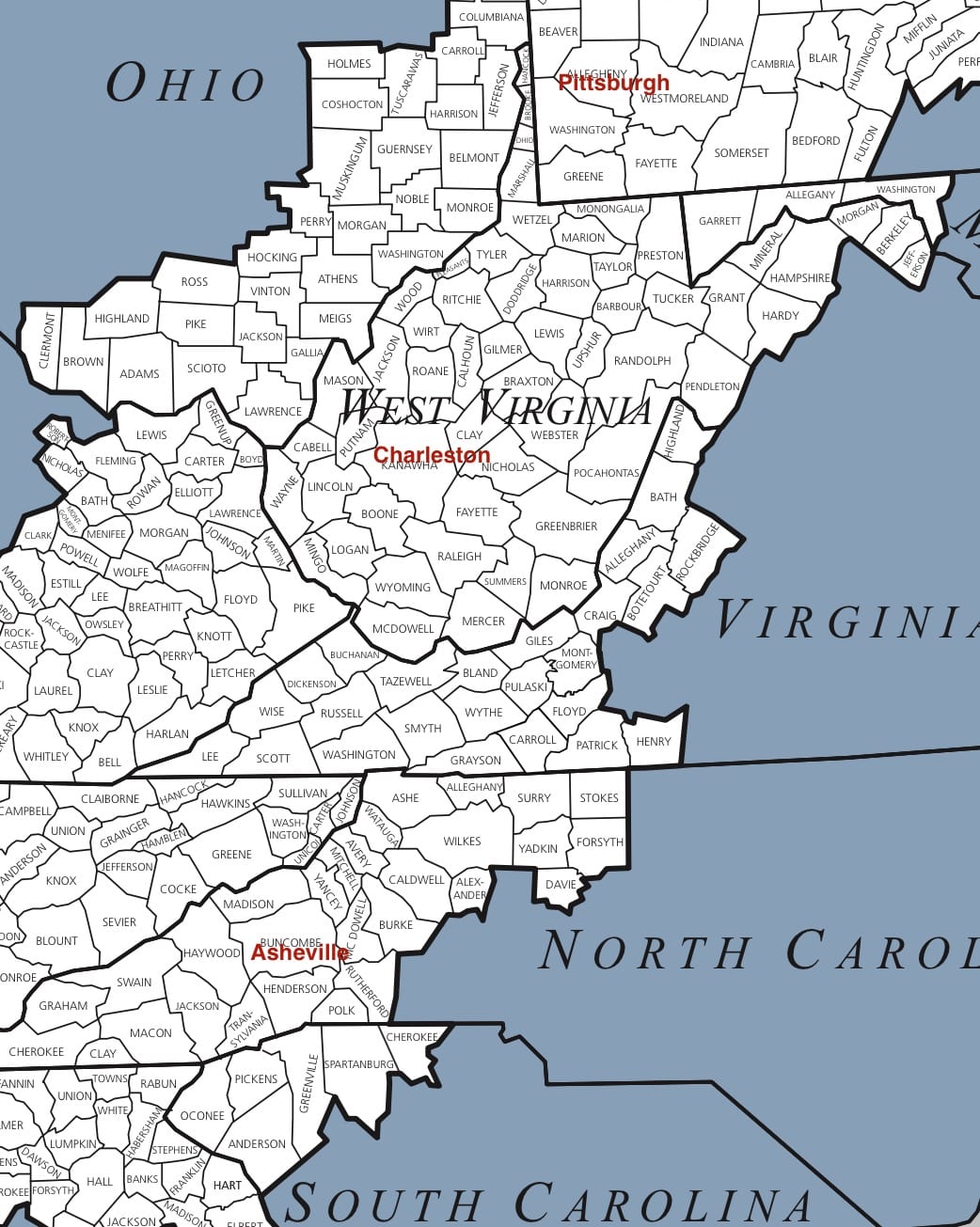Appalachia
Craft Beverages • Food • Local Ingredients
Biodiversity
The Appalachian Mountain region of the eastern United States is among the most biodiverse areas anywhere on the planet. Its forests are thick, green, and ancient. Its farms are small, rustic, and authentic. Its temperate climate, varied soils, changing elevations, micro climates, and four distinct seasons make it a perfect place to explore local ingredients.
Small farm heritage
A land of small farms, Appalachia has long been known for its exceptional home gardens with folks raising an incredible variety of traditional and heritage fruits & vegetables, generation after generation. In fact, it is said that the area encompassing central and southern Appalachia is the most diverse food shed in the country. Heirloom is not a recent fad here, but a way of life.
Fruit trees and berry bushes love the hill country climate. It is some of the best land in the country for growing apples, peaches, plums, blackberries, raspberries, and more. Pioneers brought their fruit with them as they settled the area and, today, there are still hundreds of old apple varieties growing in the hills.
Foraged abundance
Men and women have foraged the Appalachian Mountains for as long as humans have roamed these hills. Native Americans, early pioneers, and today’s residents supplement their gardens with a multitude of wild foods and herbs of the forest.
Moonshine and quaffables
Appalachian mountaineers have been famous for making whiskey for as long as they have been growing corn. And many have been making it outside the law since coming out on the short end of the Whiskey Rebellion in 1794. It’s a true heritage industry that is today making a comeback as a legal enterprise thanks to changing state laws allowing easier entry to and more flexibility for small-scale distillers.
Beer brewing, hard cider making, and winemaking — widespread industries pretty much wiped out in the region during Prohibition — are in recent decades transforming from in-home hobbies to commercial enterprises. Again, thanks to state legislatures enabling smaller-scale commercial brewing and farm winery operations, Appalachian-region breweries, cideries, and wineries are in the midst of a Renaissance that is attracting national acclaim. The region is also sought out by larger, national craft beer brands as a site for new production breweries.
Diverse influences
In pre-Colonial times, Native Americans farmed the Appalachian river valleys and foraged the hills. In their gardens they raised the staples—corn, beans, and squash—plants that are the ancestors of today’s varieties. It was the Native Americans who taught the European pioneers about the rich nutritional and medicinal properties of hundreds of native plants and herbs.
During the Colonial Period, English settlers brought their malts, hops, honeybees, and apple trees—and along with them their ales, meads, and ciders. The Scotch-Irish brought their livestock and their taste for whiskey. A bit later the Germans arrived, and with them their yeast breads and love for lager beer.
The coming of the Industrial Age saw thousands of immigrants from Eastern and Southern Europe filling the steel mill towns of southwestern Pennsylvania and the upper Ohio Valley and landing in the coal camps of West Virginia, eastern Kentucky, and southwestern Virginia. Kielbasa, pierogis, cabbage rolls, pepperoni, meatballs, pasta, and grape wines gained a foothold on the region’s dinner plates.
As the number of factories, mills, and mines grew, the region also saw growth in its African-American population, as families from the deeper South came seeking better opportunities. Similarly, Lebanese, Syrian, and Jewish immigrants sought opportunities in the region’s growing towns and cities. Ham hocks, rice, collards, black-eyed peas, hummus, tabbouleh, lox, and latkes became more common across the region.
In more recent decades, immigrants from Mexico and Central America, known affectionately as Appalatins, arrived bringing their Latin culture and cuisine. Asian immigrants also found Appalachia welcoming. Folks from China, Southeast Asia, India, and Philippines have made their homes in mountain towns from Pittsburgh to Asheville. All have added depth, spice, and variety to the region’s culinary and beverage landscape.
Appalachia’s new culinary landscape
Each new influx of people changes Appalachia as Appalachia changes them. New arrivals assimilate to life in the age-old, lush green mountains, learning its rivers and valleys, its people and pace, its flora and fauna, its seasons and seasonings. Yet through this assimilation they add their thread to the Appalachian fabric.
Whether it is local corn turned into mountain moonshine or tortillas, wild mountain blackberries made into sweet rustic wine or a fancy reduction, apples picked and eaten raw or turned into a crisp hard cider, foraged mountain herbs brewed as a pot of tea or flavoring a farmhouse ale, forest honey dripped onto a biscuit or fermented into a sweet mead, the Appalachian region provides endless possibilities for beverage and food creation and experimentation. The resulting culinary fusion and creativity taking place today in Appalachia takes a backseat to no other region of the United States. Likewise the region’s beverage producers are now making some of the finest beers, ciders, meads, and distilled spirits found anywhere.

